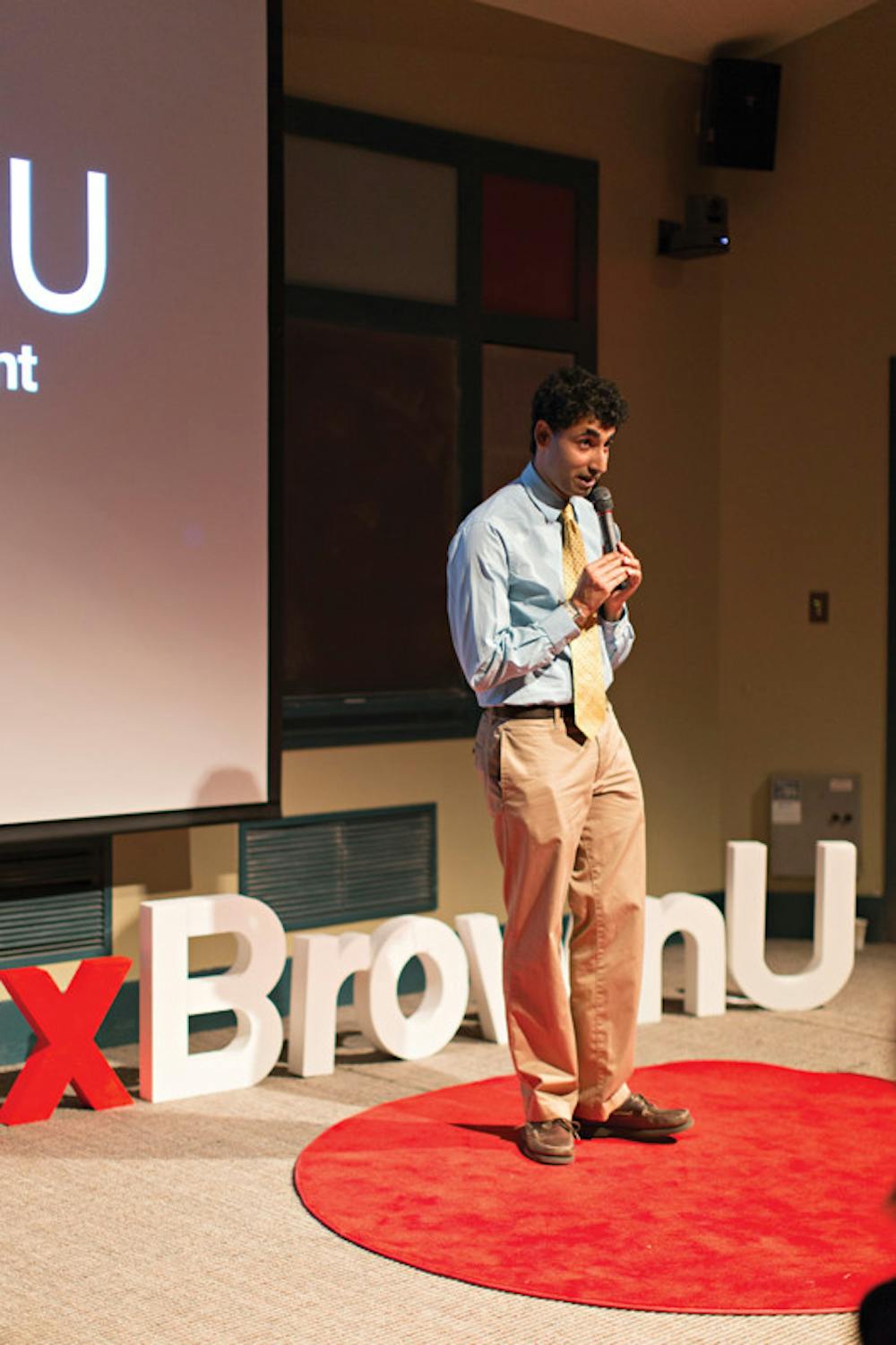Students filled Salomon 001 to hear seven undergraduates give their “ideas worth spreading” at the TEDxBrownU conference Saturday.
Gaining the Student Activities Office’s approval as an official student group this year has allowed TEDxBrownU to “solidify our own identity,” said Emma Milward ’16, one of the conference’s organizers, as she congratulated each of the speakers.
Though the conference theme “Student Voices” may seem broad, Jessica Tabak GS, who worked on the conference in the past, advised the group to find a theme “that would not prompt or restrict the speakers,” Milward said. But “as the event blossomed,” the theme seemed appropriate and empowering, particularly in light of the shutdown of former New York City Police Commissioner Ray Kelly’s lecture last semester, she said.
Organizers wanted to “redefine and highlight the power of student voices,” rather than limit them, Milward said. More than 30 people auditioned to speak, and seven were chosen, she added.
The event was organized independently from the TED global conference forum.
Sahil Luthra ’14, a former Herald science and research editor, acted as emcee for the conference, while Cliff Weitzman ’16 kicked off the talks by explaining how to turn ideas into reality by offering three pieces of advice: Think of many ideas because getting good ideas is a numbers game, take advantage of the high density of smart and passionate people, and convince other people to contribute to ideas through passion.
All seven speakers at the TEDxBrownU conference offered ideas about unique passions — including caring for fish and communicating pain.
Sabrina Imbler ’16, a Herald features editor, spoke about how fish stereotypes contribute to their mistreatment. “Fish are magic,” Imbler said, adding that despite the stereotype that fish have a short-term memory, the animals have a memory span of up to three months and can tell time.
“Fish are complex, magnificent creatures, not low-maintenance pets,” she said. Most people do not know that fish bowls are actually a “silent assassin” because toxic ammonia builds up in the bowls, Imbler said, adding that she was banned from her local PetCo for trying to inform people of this issue.
In his lecture, Ethan Blake ’17 pondered “To Loop or Not to Loop,” focusing on the struggle between the purity of acoustic music and the power of electronic music. Blake drew the connection between tainting rich black coffee with cream and sugar and ruining acoustic music with electronic production. But “there’s a fine line between acoustic and electronic music,” said Blake.
After recounting a short history of the microphone’s use in live music over a loop he created using his guitar, Blake asked, “Can we consider the microphone to be the first significant step towards the advent of electronic music? Also, does it sprinkle a little sugar in your morning java?”
After a short break, Alexandra Urban ’15, a Herald photographer, said in her talk that “if you teach to how the brain is organized, it actually improves learning.” Both creating positive environments and achievable challenges and using different senses to teach students can contribute to student learning, she said.
Urban recounted a time she was tutoring physics in high school. She had her students make paper airplanes to teach the concept of lift. “We actually ended up throwing the airplanes off of the second-story balcony into our all-school dining hall. It was quite a learning experience for all students, not to mention the teachers,” she said.
Amelia Friedman ’14, who learned Bengali through the Brown Student Language Exchange, spotlighted U.S. students’ lack of knowledge about non-Western languages. “Ninety-five percent of American college students in a language course are studying a European language,” she said, adding that this exclusion of non-Western languages limits who is invited into the international conversation.
“As we prepare the next generation of global leaders, we need to consider how we’re preparing to communicate with their peers around the world,” she said. “How is our education preparing us to communicate with people around the world who do not have the benefit of an education?”
Melody Cao ’16, The Herald’s director of business development, challenged audience members to think of bugs as food while juggling a plethora of puns. Cao showed engaging graphics demonstrating the nutrition and sustainability of entomophagy — the practice of eating bugs.
Most people already eat bugs in some form, she said, as there are around 130 insect fragments per 100 grams of wheat flour we eat, and cricket flour prompts no problems for those allergic to gluten, dairy or soy.
Emily Fu ’15, who was unable to attend the event, delivered her talk, entitled “Pain Narratives,” through a pre-recorded video. Medical professionals ask patients to rate their pain on a scale of one to 10. But this scale is very subjective because people’s pain tolerances can vary greatly, she added.
There are many different ways to demonstrate pain, and it is necessary to merge storytelling with the science of pain, Fu said.
After the event, a small reception allowed the speakers to mingle with the audience members. The three organizers of the event — Milward, Rebecca Carrol ’15 and Loren Dowd ’16, a Herald assistant design editor — said they hope this conference will generate more momentum so it can become an annual event.

ADVERTISEMENT




